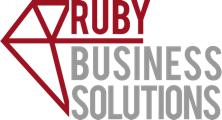Running effective virtual meetings is crucial if your staff works remote. If your staff works in an office, it is important to know when to choose to have a virtual meeting over an in-person meeting with your staff. Virtual meetings can save an enormous amount of time and energy when planned and performed efficiently. Below are some tips on how to run an effective virtual meeting with your staff.
Before the Meeting – Things to consider When Planning Your Meeting
How many people are attending?
The number of individuals attending your meeting will determine how structured or how casual your meeting is. For example, a one-on-one meeting could have much more flexibility than a meeting with twenty people.
What is being accomplished in the meeting
Determine what the purpose of the meeting is. Is it a weekly catch-up or a meeting discussing your marketing plan? What topics need to be reviewed during this meeting?
Identify what tools you will need to accomplish the purpose of your meeting. Do you need to share your screen? Will this meeting require collaboration from your team? Should this meeting be recorded? Does anything need further preparation prior to this meeting?
Time of the Meeting
If you have staff working in different areas of the world, you may want to consider their time zones when scheduling the meeting. Depending on your situation, you may need to have multiple sessions for different staff members or a video recording for staff who are in a time zone which doesn’t line up well.
A good thing to consider as well is the time of day your staff members collaborate best. Some individuals prefer to have meetings in the morning and do their deep work in the afternoon and vice versa. If you have a team with varying preferences, it may be best to alternate your meeting times.
Create a Meeting Agenda
A meeting agenda can be sent out to your staff to ensure everyone is on the same page for the meeting, knows what is being discussed, and can prepare for the meeting efficiently.
In your meeting agenda, be sure to specify the purpose of the meeting, the topics being discussed and their order, as well as who the moderators of the meeting are. Consider having multiple moderators to encourage participation from your team. Be sure to leave time within your meeting agenda for questions
Meeting Etiquette
Communicate what you expect from your team during your virtual meetings. Meeting etiquette can help convey your workplace culture, and it allows your staff to know exactly what they should be doing to help the meeting run smoothly.
Some examples of meeting etiquette are:
- Arrive early to test your equipment
- Put your phone on silent during the meeting, if you cannot do so for some reason, let the meeting host know
- Turn your mic on mute when you are not speaking
- Read the meeting agenda prior to the meeting
- Having your camera on is encouraged
- Dress code (formal, casual, etc).
During the Meeting
Create a Meeting Kick-off
A meeting kick-off is done in the first five minutes of the meeting while waiting for everyone to arrive and settle in. It helps communicate your workplace culture which can be difficult when your staff works remotely.
Some examples of a meeting kick-off are:
- Playing music (increase engagement by allowing staff to vote or select the song)
- Watching a video
- Trivia
- Short icebreaker
- Take a poll
- Have a dance party
Have Breaks
Depending on the length of your meeting, you may need one or more breaks to give your staff a chance to transition between topics and to prevent fatigue.
Some of the examples above are great to use for breaks during your meeting, some other activities for breaks are:
- Stretching
- Make coffee/tea
- Step outside
After the Meeting
Meeting Wind-down
Encourage your staff to take a transition break following your meeting, just as they would if there were in an office. This could be something you allow them to do individually, or in break out groups.
Some ideas for meeting wind-downs are:
- Water cooler chat
- Go for a short walk
- Team building activities
Meeting Notes
Send your team the meeting notes including next steps for each topic. This promotes engagement and reduces fatigue during your meeting since staff won’t be busy taking down notes. Meeting notes also give staff members something to refer to and helps everyone track their progress.

Chief Operations Officer
Ruby Business Solutions Inc.







